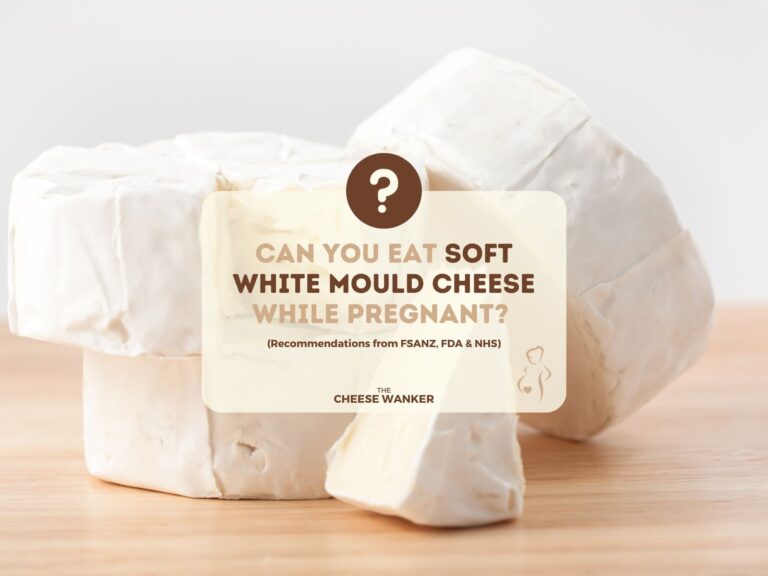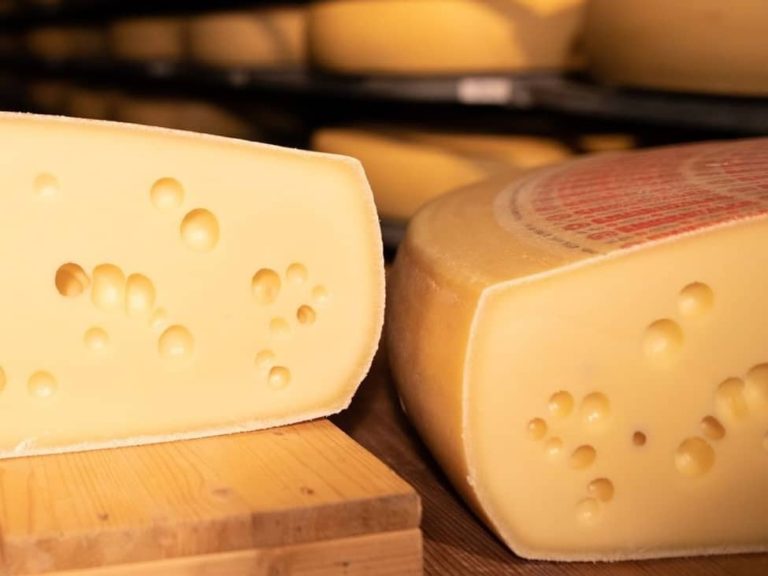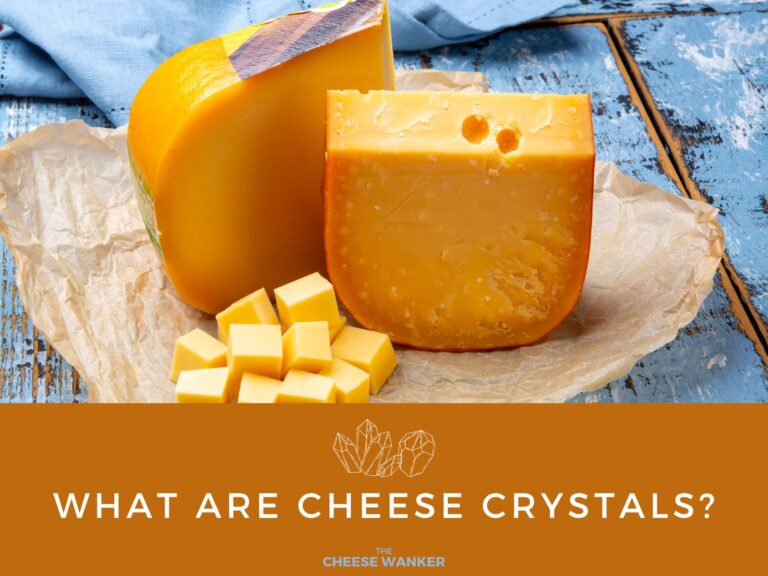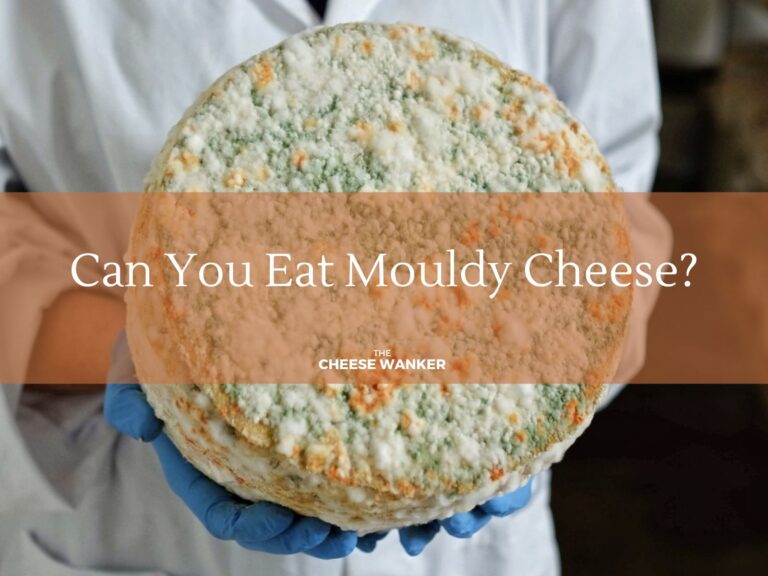There are many terms used to describe how cheese changes with time. Ripening, ageing and maturation are just a few. But what actually happens inside the cheese as it ripens?
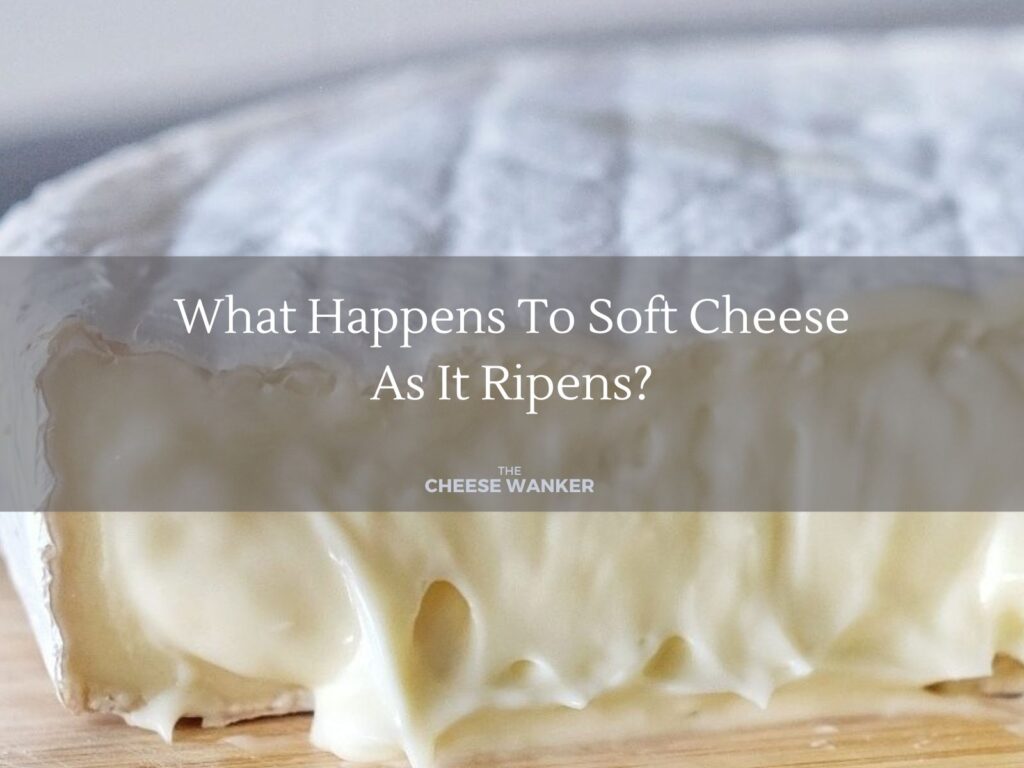
SEE ALSO: Do you know your double creams from your triple creams? →
What is ripening?
This is an incredibly complex process and it would take a dissertation to attempt to explain all of it. Therefore, let’s focus on one particular component today, proteolysis. And how it contributes to the soft texture of white mould cheeses like Brie and Camembert.
A sliding scale of textures
Picture this. You’ve just cut through this gorgeous Camembert that you bought from your monger. And you notice a range of textures through the cross-section. The centre is still quite light in colour and firm (we’ll call this chalky).
On the other hand, the bit just under the surface is more yellow and soft (we’ll call this oozy). Why does it look like this?
Cheese is a network of proteins
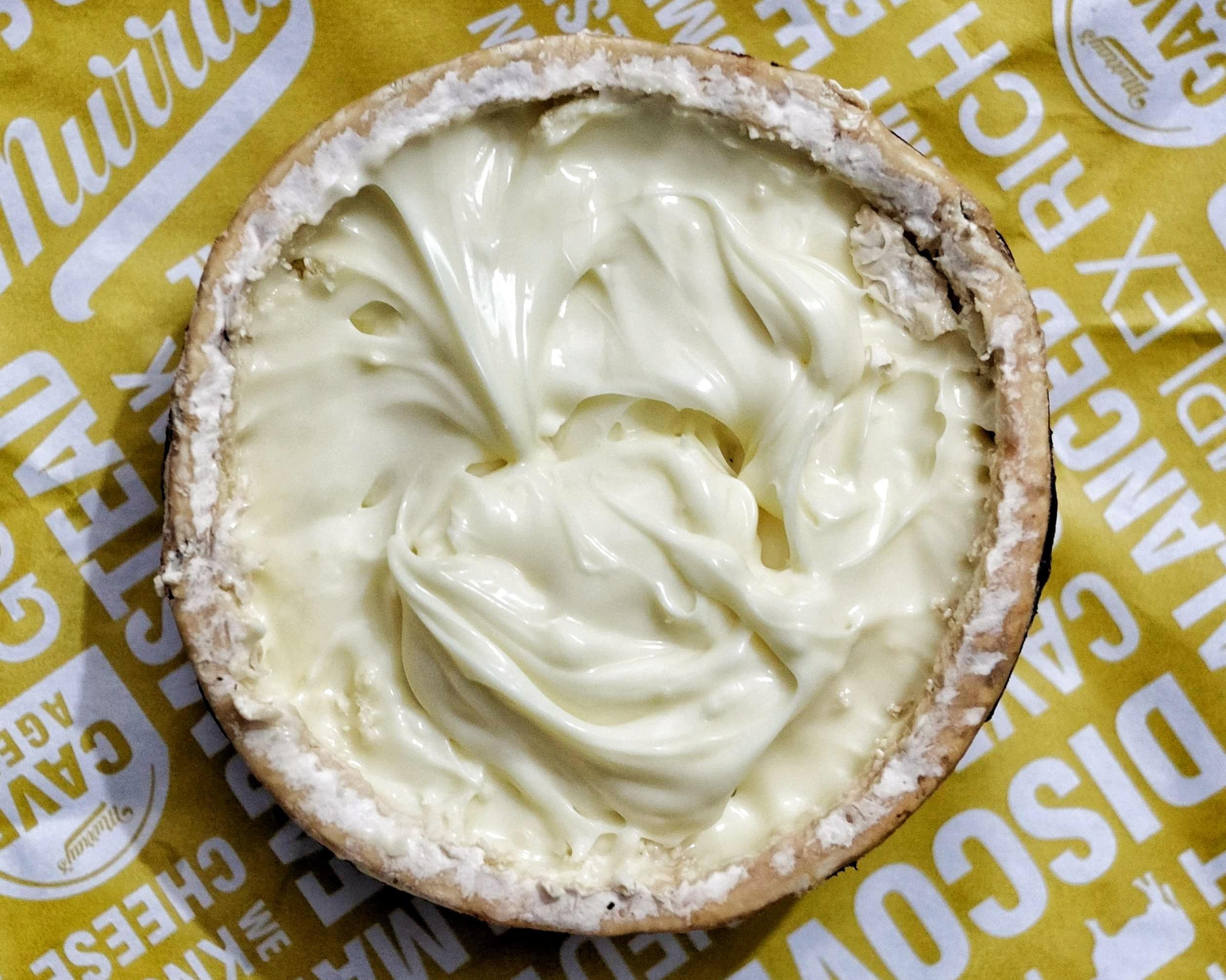
Basically, cheese is a network of a specific type of protein called casein. And proteolysis is the process by which said proteins are broken down.
Quick linguistic detour: Lysis is actually derived from the Greek work lýsis which means “loosening”. Hence, proteolysis is the loosening of proteins.
What causes proteolysis in cheese?
Before we talk about how proteolysis affects texture and colour of cheese, let’s take a brief look at why it happens.
Actually, enzymes called proteases are the main cause of proteolysis in cheese. They can come from coagulants like rennet (see link in bio to read more about rennet), starter culture bacteria and surface mould.
Penicillium camemberti
In the case of Camembert, the mould on the surface (Penicillium camemberti) produces proteases that break down the protein and produce ammonia.
Unsurprisingly, this process begins with the part of the cheese that is directly underneath the rind. Eventually, it slowly spreads towards the centre.
Why is the colour different?
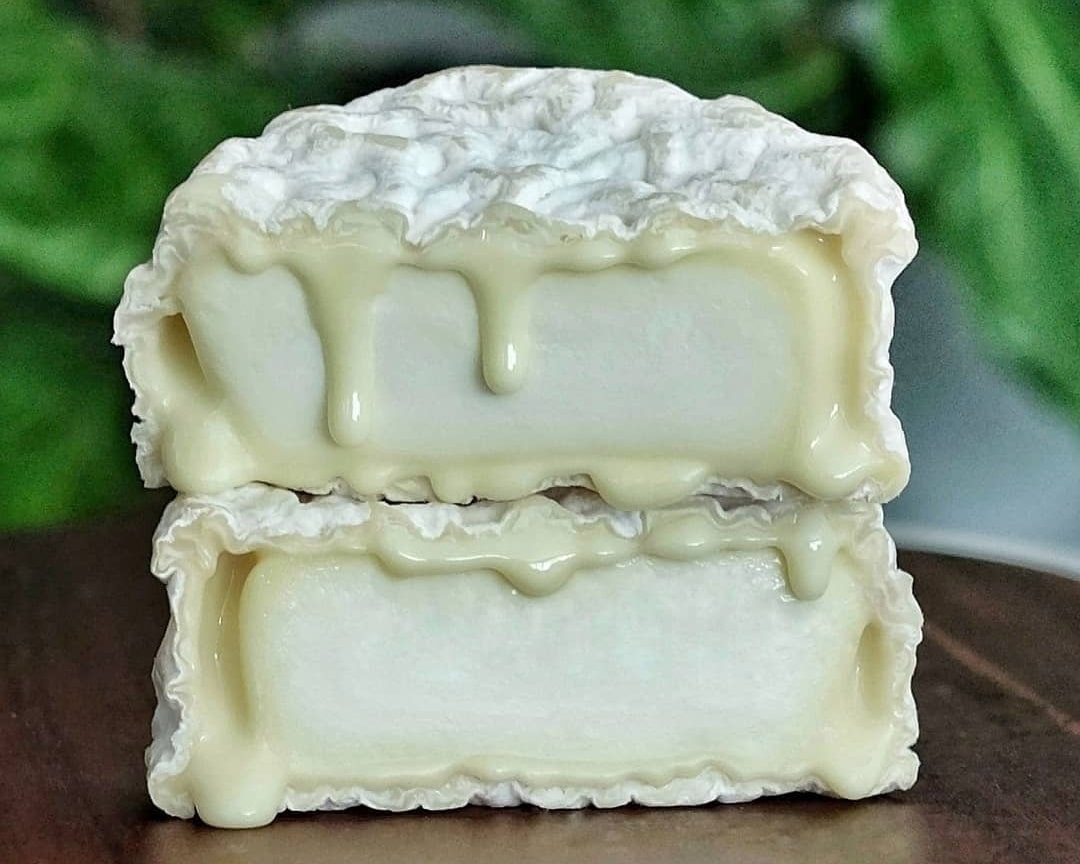
As the protein breaks down, the cheese’s texture loosens. Consequently, this causes the cheese to become more oozy. But why is the colour slightly different to the chalky centre?
Ammonia, I’m talking to you! Effectively, the ammonia that is formed when the protein breaks down makes the cheese less acidic near the surface. This further impacts how the proteins stick together. As a result, the cheese looks slightly translucent with a tinge of yellow.
Ripening from the surface to the centre
During maturation, the cheese softens first near the rind, but the centre still has a strong casein structure and is, hence, more chalky.
If you let your Camembert ripen for long enough, the entire structure will eventually break down to become completely oozy. Unfortunately, this also leads to higher ammonia levels which may create an unpleasant smell.
The process by which the centre goes from chalky to oozy is a fairly complex one and involves the cheese’s acidity and calcium levels. And that would be a separate blog post in its own right.
Now you know that happens to soft cheese at it ripens
So, there you have it. This is what happens to soft cheese as it ripens.
Now, tell me… Do you like your soft cheeses with a chalky centre? Or do you prefer them oozy throughout? Drop us a comment below.
